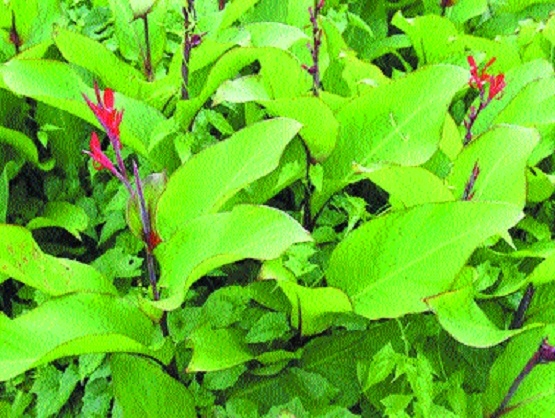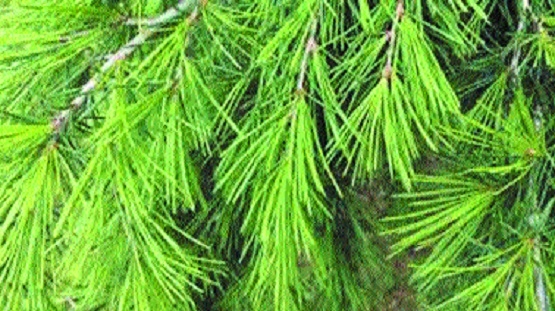Medicinal values of ‘Patri’ used in festivals
| Date :11-Sep-2019 |

By Rajendra Diwe :
Kadali Patra: In English it is called as Plantain or Banana Plant. The Kadali leaves resemble like that of Banana leaves, but they are small in size than Banana leaves. The botanical species may be different. In Hindi and Sanskrit it is called as Kadali Patra while in Telugu it is known as Arati. In Marathi it is called as Kardali. The whole plant, roots, flowers and unripe fruits are of medicinal value. The flowers contain: dopamine, dopanoradrenalin, caffieic acid, cinamic acid, p-coumaric acid, ferulic acid, protocatechuricacid, cornpesterol, sitbmasterol, cyclomusalenol, cyclomusalenone and Glycosides. Ripe fruits contain: calcium, magnesium, manganese, copper, iron prosperous, sulfur, iodine, aluminum, zine, cobalt, citric acid, mallic acid and oxalic acid. Pharmacologically it acts as astringent, laxative, anthelmintic, cooling agent, anti-inflammatory, antithirst, blood purifier and appetizer. It is used in Otalgia, Dysentery, Ulcerative colitis, Diabetes, Hypotension, Nephritis, and Gout. Extract of flowers reduces blood sugar, Genitaldis order, Dyscrasia and Calculii.

Devdar Patra: In English it is known as Deodar Cedar or Himalayan Cedar while in Hindi as Deodar; in Sanskrit and in Telugu it is known as Devadaru and in Marathi it is popular as Devadar. The stem bark and flowers are of medicinal values. The wood and seed contain: A bitter substance-Nyctanthin, Cedralone, Beta-Sitosterol; Flowers contain, Bargapten Flavone, Glucoside and Nyctanthin; Bark contains, Toonacilin and Toonacilids, bitter resin; wood contains, Ferneslene, Geronyl, Geranoil, Siderin and Golden yellow colourd volatile oil. Pharmacologically it acts as an astringent, tonic, sweet aroma, spermatopoietic, antileprotic and bloor purifier. It is used in chronic dysentery and dyscrasis, external application in ulcer, burning sensation, headache, leucoderma; flowers are used in menstrual disorders.

Malati Patra: In English it is known as common jasmine while in Hindi it is known as Chameli. In Sanskrit it is known as Jatika Patram, while in Marathi it is known as Jaai. The whole plant, leaves and flower are of medicinal value. The plant contains: Benzylacetate, Benzyl benzoate, Benzaldehyde, Benzyl alcohol, Eugenol, Geraniol, Cis-Jasmone, Linalyl alcohol, nerol, nerolidol, indole, Benzoic acid, peresol, methyl jasmonate, Benzyl cyanide, cinnamyl, Benzoate, Vanillin, Myrcene, Ascorbic acid and alkaloid Jasminine. Pharmacologically, it acts as cooling agent, diuretic, deobstrent, anti-leprotic, and in wound healing. It is used in: Stomatitis, Ophthalmia, ulcer, skin diseases, in stimulation of menstrual flow, anthelmintic, flowers, used in external applications in headache and skin disease, while leaves should be chewed in apthae and ulceration in mouth. Reference: Ayurved Ka Pran, Vanaushadhi Vidnyan, published by Department of Garden and Herbs, Shri Vedmata Gayatri Pariwar Trust, Shantikunj, Haridwar (Uttaranchal)